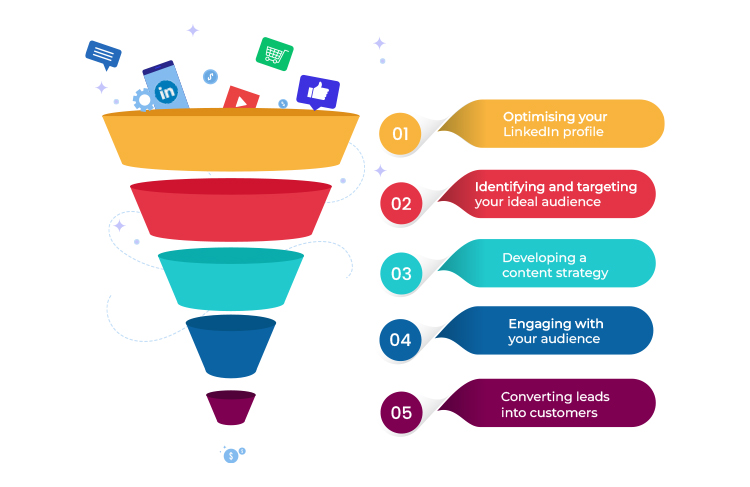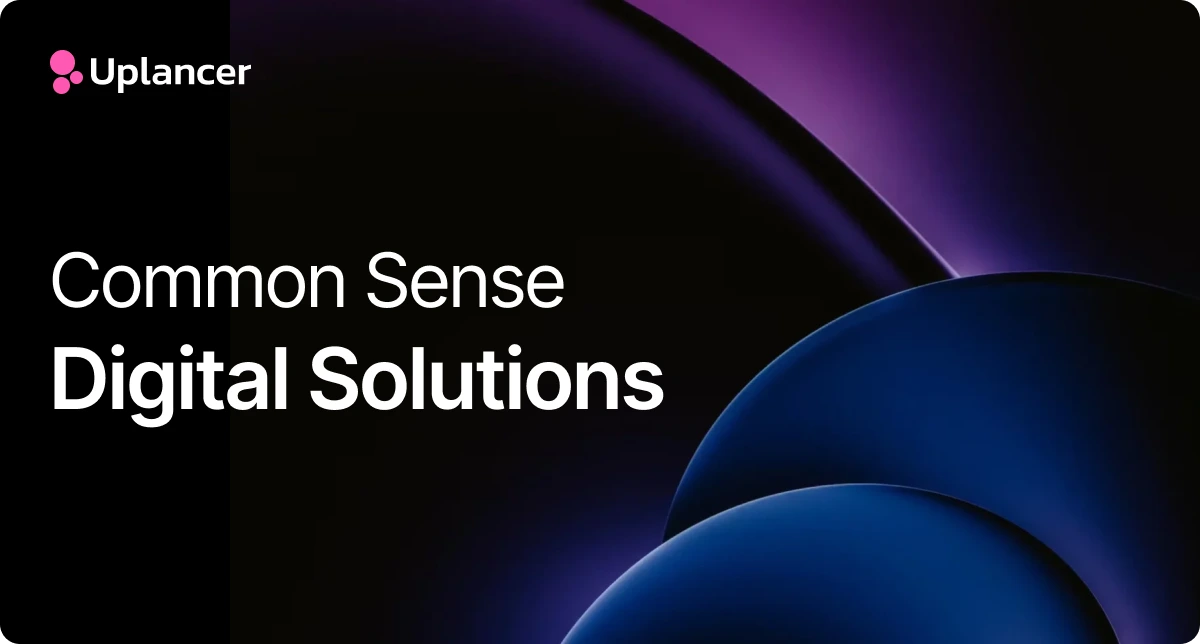LinkedIn Lead Generation Funnels: Best Practices for B2B Success

In today’s digital landscape, LinkedIn has emerged as a powerful platform for B2B lead generation. With its vast professional network and targeted audience, LinkedIn provides valuable opportunities to connect with potential clients and grow your business. To maximise your success on LinkedIn, it’s crucial to understand and implement effective lead generation funnels. In this blog, we will explore the key components of LinkedIn lead generation funnels and provide you with a step-by-step guide to creating your own. So, let’s dive in!
Understanding LinkedIn Lead Generation Funnels:
Before we jump into the practical aspects, let’s clarify what we mean by a lead generation funnel. Essentially, a lead generation funnel is a series of steps designed to guide your potential clients from initial awareness to eventual conversion. On LinkedIn, this involves strategically optimising your profile, identifying your target audience, developing a content strategy, engaging with your connections, and converting leads into customers. Now, let’s explore each component in detail.
Step-by-Step Guide to Creating a LinkedIn Lead Generation Funnel:

Step 1: Optimising your LinkedIn profile:
Your LinkedIn profile is like your virtual business card, and making a positive impression is essential. Start by selecting a professional profile picture that represents your brand well. Craft a captivating headline and summary that clearly communicate what you can offer. Showcase your relevant experience and skills to build credibility and trust with your connections.
For example, let’s say you’re a marketing consultant targeting small businesses. To optimise your profile, choose a professional headshot where you appear approachable and confident. Craft a headline like “Helping Small Businesses Skyrocket Their Marketing Success” to grab attention. In your summary, highlight your expertise and mention specific results you’ve achieved for clients. Showcase your relevant experience, such as managing successful marketing campaigns or certifications you’ve earned.
Step 2: Identifying and targeting your ideal audience:
Knowing your target market and understanding your potential customers is key to successful lead generation. Take advantage of LinkedIn’s advanced search features to find professionals who match your target audience. Additionally, engage with like-minded individuals and expand your network by joining LinkedIn Groups related to your industry.
Continuing with the marketing consultant example, you can use LinkedIn’s advanced search features to find small business owners or marketing managers within specific industries or locations. Join LinkedIn Groups like “Small Business Marketing Strategies” to engage with your target audience. By sharing valuable insights and answering questions, you can establish yourself as a trusted resource.
Step 3: Developing a content strategy:
Creating valuable and informative content helps establish you as a trusted authority in your field and attracts potential clients. Use different formats such as articles, videos, and infographics to cater to diverse preferences. Consistency and regular posting are important to stay top-of-mind with your connections.
To showcase your expertise, create content that addresses common challenges faced by small businesses. For instance, you could write an article titled “5 Cost-Effective Marketing Tactics for Small Businesses” or create a video series sharing practical marketing tips. Mix up your content formats to cater to different preferences and maximise engagement. Aim to post at least twice a week to maintain visibility and stay on top of your connections’ minds.
Step 4: Engaging with your audience:
LinkedIn is a social platform, and engagement is crucial for lead generation. Actively participate in relevant LinkedIn Groups and discussions to share your insights and expertise. Respond promptly to comments and messages to foster meaningful conversations. Taking the time to personalise your outreach can help you build strong relationships and gain trust.
Actively participate in LinkedIn Groups relevant to your niche by sharing your knowledge and insights. For example, if someone asks a question about social media marketing, provide a thoughtful response with actionable tips. Respond promptly to comments on your content, showing appreciation for feedback and sparking meaningful conversations. When reaching out to potential clients, personalise your messages, referencing specific details from their profile or recent posts.
Step 5: Converting leads into customers:
To turn your leads into paying customers, offer valuable lead magnets and exclusive content that provide additional value to your audience. Utilise LinkedIn’s messaging and InMail features to nurture relationships and guide prospects further along the funnel. Tracking and analysing lead generation metrics will help you refine your approach and improve conversion rates.
Offer lead magnets, such as a free e-book on “Marketing Strategies for Small Businesses,” to capture your audience’s contact information. Utilise LinkedIn’s messaging and InMail features to nurture relationships with your leads. For example, you could send a personalised message thanking them for downloading your e-book and offering a complimentary consultation. Track metrics like conversion rates and engagement levels to assess the effectiveness of your lead generation funnel and make improvements as needed.
By following these steps and adapting them to your specific business and target audience, you can create a powerful LinkedIn lead generation funnel. These strategies, when implemented effectively, can lead to significant B2B success on LinkedIn.
Best Practices for LinkedIn Lead Generation Funnels:
To enhance your B2B success on LinkedIn, here are some best practices to consider. Implement A/B testing and continuously improve your strategies based on data-driven insights. Leverage LinkedIn’s advertising options to reach a broader audience and boost your lead generation efforts. Incorporate social proof and testimonials to build trust and credibility.
Finally, don’t underestimate the power of networking and cultivating relationships within your industry. LinkedIn is a networking platform, and building relationships is fundamental to lead generation success. Connect with industry professionals, engage in conversations, and provide value whenever possible. Actively participate in relevant LinkedIn Groups and contribute to discussions. Remember, genuine relationships often lead to referrals and new business opportunities.
Common Mistakes to Avoid in LinkedIn Lead Generation Funnels:

As you navigate LinkedIn’s lead generation funnels, it’s crucial to steer clear of common mistakes. By keeping things simple, you can connect with people from all over the world and avoid these pitfalls.
Over-Promotion and Sales-Focused Approach:
Avoid bombarding your connections with constant sales pitches. Instead, focus on providing value through informative content and thoughtful engagement. Build relationships by genuinely connecting with your audience and addressing their needs. This approach fosters trust and increases the likelihood of conversions.
Lack of Personalization and Generic Messaging:
Personalization is key to capturing attention and establishing meaningful connections. Avoid using generic, cookie-cutter messages when reaching out to potential clients. Take the time to understand their specific challenges and tailor your communication accordingly. Personalised messages show that you genuinely care and increase the chances of positive responses.
Ignoring Data and Analytics:
LinkedIn provides valuable data and analytics to help you measure the success of your lead generation efforts. Don’t overlook this valuable information. Continuously monitor and analyse metrics such as engagement rates, click-through rates, and conversion rates. This data-driven approach enables you to make informed decisions and optimise your strategies for better results.
By avoiding these common mistakes, regardless of your location, you can optimise your LinkedIn lead generation funnels. Focus on providing value, personalise your communications, and leverage the insights provided by data and analytics. These simple practices will help you connect with people globally and increase your B2B success on LinkedIn.
Conclusion:
LinkedIn lead generation funnels can significantly contribute to your B2B success by connecting you with your ideal clients and converting them into loyal customers. By optimising your profile, targeting the right audience, creating valuable content, engaging with your connections, and employing effective conversion tactics, you can build a robust lead generation system on LinkedIn.
Remember to implement best practices, avoid common mistakes, and consistently refine your strategies. So, why wait? Start implementing LinkedIn lead generation funnels today and unlock the vast potential for B2B success that LinkedIn offers!












